25 November 2025
Key Takeaways
- Australian Standards outline both how slip ratings are measured and which ratings are appropriate for different applications, helping designers and builders choose tiles that meet safety, performance, and compliance requirements.
- The level of slip resistance of a tile is measured by its slip rating, which guides whether a tile is suitable for indoor areas such as bathroom tiles and kitchen tiles, outdoor areas, or commercial and public spaces.
- At Johnson Tiles, we provide all the information you need to support architects, designers, builders, retailers, and your clients. Whatever the project, you’ll find guidance to help make the right choice.
Table of Contents
- What Are Tile Slip Ratings — and Why They Matter
- Understanding P-Ratings in the Australian Standard (AS 4586)
- Slip Resistance Testing Methods in Australia
- Choosing the Right Slip Rating for Your Project
- Common Slip Rating Mistakes (and How to Avoid Them)
- How Johnson Tiles Simplifies Slip Rating Compliance
- FAQs on Tile Slip Ratings for Retail & Commercial Use
Choosing tiles is about more than looks — slip resistance is essential for safety, particularly in wet or busy areas. Slip ratings help ensure that the tiles used are suitable for their intended environment, providing confidence for designers, installers and your clients, while meeting tiling Australian standards.
Whether it’s a school, restaurant, hotel, multi-residential development or a home, slip-resistant tiles help reduce the risk of slips and falls. This guide explores slip resistance in Australia, the standards, testing methods used, and how you can choose the right tiles for any project.
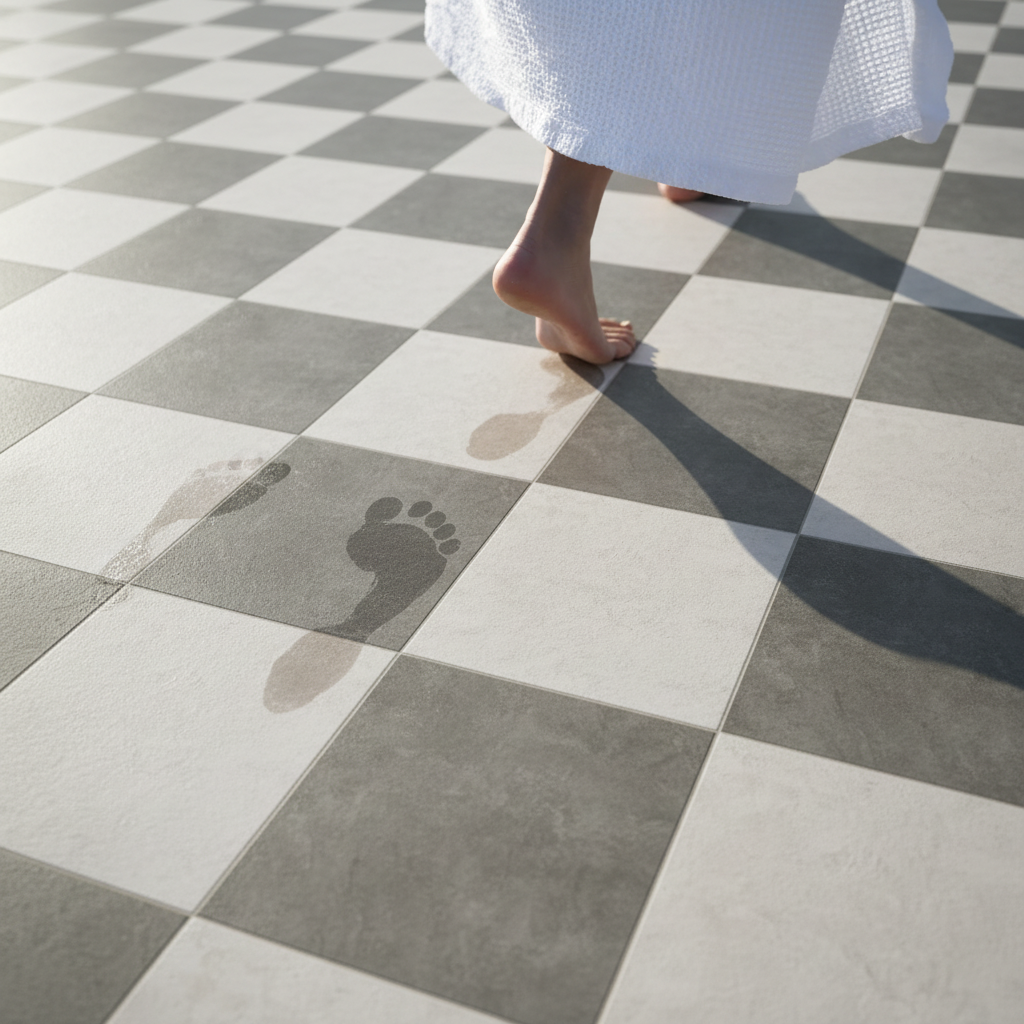
What Are Tile Slip Ratings — and Why They Matter
Slip ratings classify how slip-resistant a surface is. In Australia, the most common ratings are the Wet Pendulum Test (P ratings) and the Oil-Wet Ramp Test (R ratings). These ratings help determine how safe a tile will be under expected conditions, particularly when moisture, oil, or contaminants are present.
While many people select tiles primarily on looks, slip resistance is crucial to ensure the tile performs safely once installed. Tiles in certain areas — such as bathrooms, balconies, commercial kitchens and shopping centres — may be exposed to water, spills, or see a lot of traffic. Using the wrong rating can increase the risk of slips, leading to safety issues and costly rectification.
Understanding P-Ratings in the Australian Standard (AS 4586)
P ratings are determined by the Wet Pendulum Test, the most widely used slip resistance test in Australia and recognised under AS 4586. The test measures a tile’s grip under wet conditions, using a pendulum with a spring-loaded rubber slider to simulate a shoe striking the surface. The friction generated is recorded as a Slip Resistance Value (SRV) and classified from P0 to P5, with P0 being the least slip-resistant and P5 being the highest.
AS 4586 Slip Resistance P Classifications
| Slip Rating | Slider 55 | Slider 96 | Risk of Slipping |
|---|---|---|---|
| P0 | – | < 12 | – |
| P1 | < 20 | 12 – 24 | Very High |
| P2 | 20 – 34 | 25 – 34 | High |
| P3 | 35 – 39 | 35 – 44 | Moderate |
| P4 | 40 – 44 | 45 – 54 | Low |
| P5 | > 44 | > 54 | Very Low |
The National Construction Code (NCC) sets mandatory slip resistance requirements for stairs, nosings, landings, and ramps, where the risk of slipping is higher. In addition to this, HB 198:2014 offers further guidance on safe flooring for a range of environments. To help you make the right choice, you can refer to our slip ratings guide and the Slip Rating Requirements Table for recommended ratings across different applications.
Slip Resistance Testing Methods in Australia
Slip resistance in Australia is assessed under AS 4586:2013 – Slip resistance classification of new pedestrian surface materials. The standard outlines several methods, but the two most common are:
Wet Pendulum Test (Appendix A – P Ratings)
This test measures slip resistance under wet conditions and is suited to most general applications, from bathrooms and public walkways to outdoor surfaces.
Oil-Wet Inclining Platform Test (Appendix D – R Ratings)
The Oil Wet Inclining Platform Test measures slip resistance when a surface is coated in oil. A person walks back and forth on an inclining ramp until slipping occurs. The resulting R rating (R9–R13) reflects how the tile performs in heavily contaminated conditions, such as commercial kitchens, workshops, or food production areas. This test only applies to new, not installed floors.
The Australian Standards provide classifications for:
- New pedestrian surface materials — AS 4586
- Existing pedestrian surface materials — AS 4663
If a floor has already been laid and may have seen wear, dirt, sealers, or residues, AS 4663 is used for on-site testing.
Choosing the Right Slip Rating for Your Project
For commercial projects — like multi-residential buildings, aged care, schools, hospitality, and retail — safe pedestrian surfaces are crucial. While the NCC only mandates slip-rated flooring for stairs, landings, and ramps, HB 198:2014 gives guidance for wider areas, helping specifiers, and designers apply AS 4586 results effectively.
Common commercial applications include:
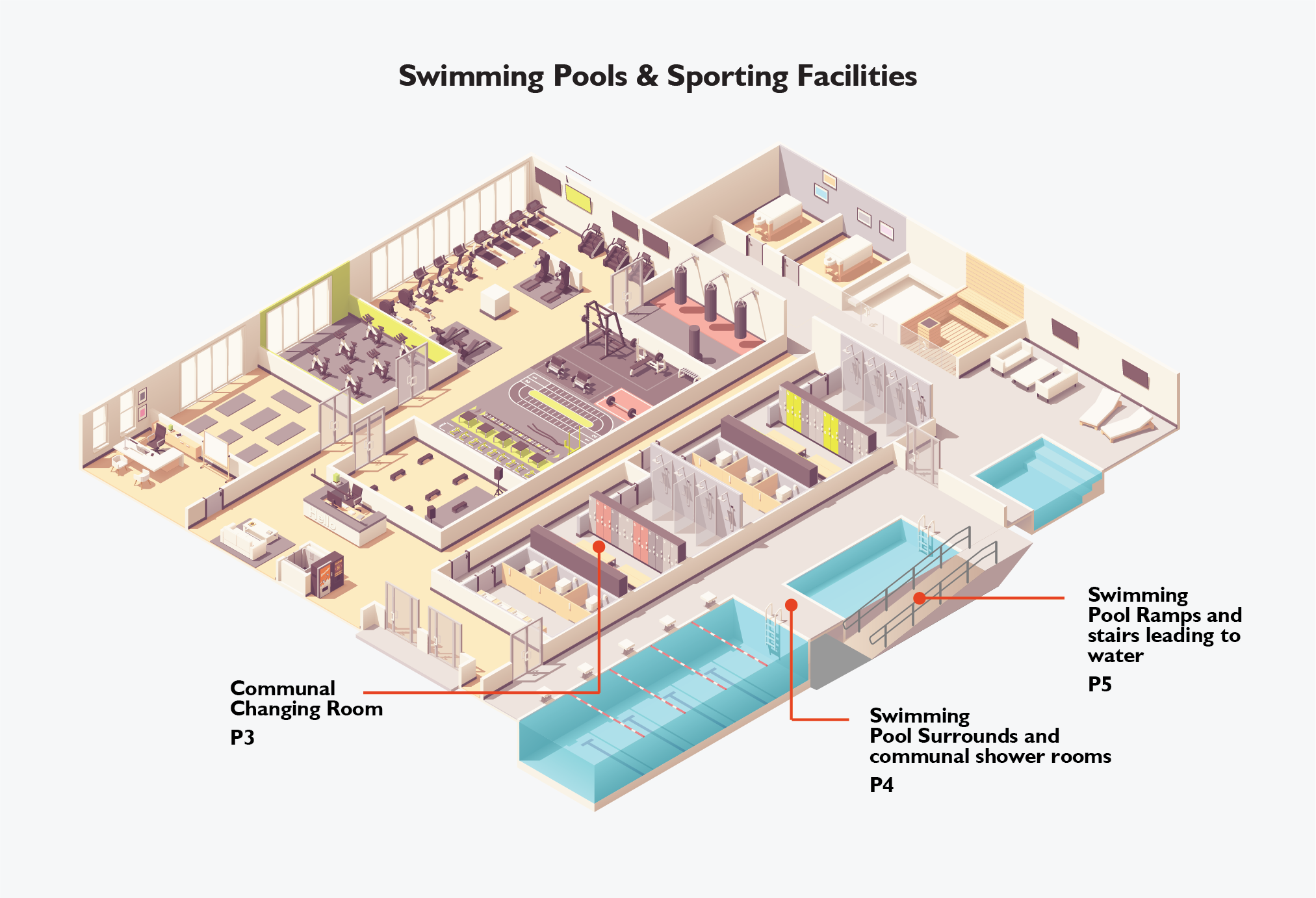
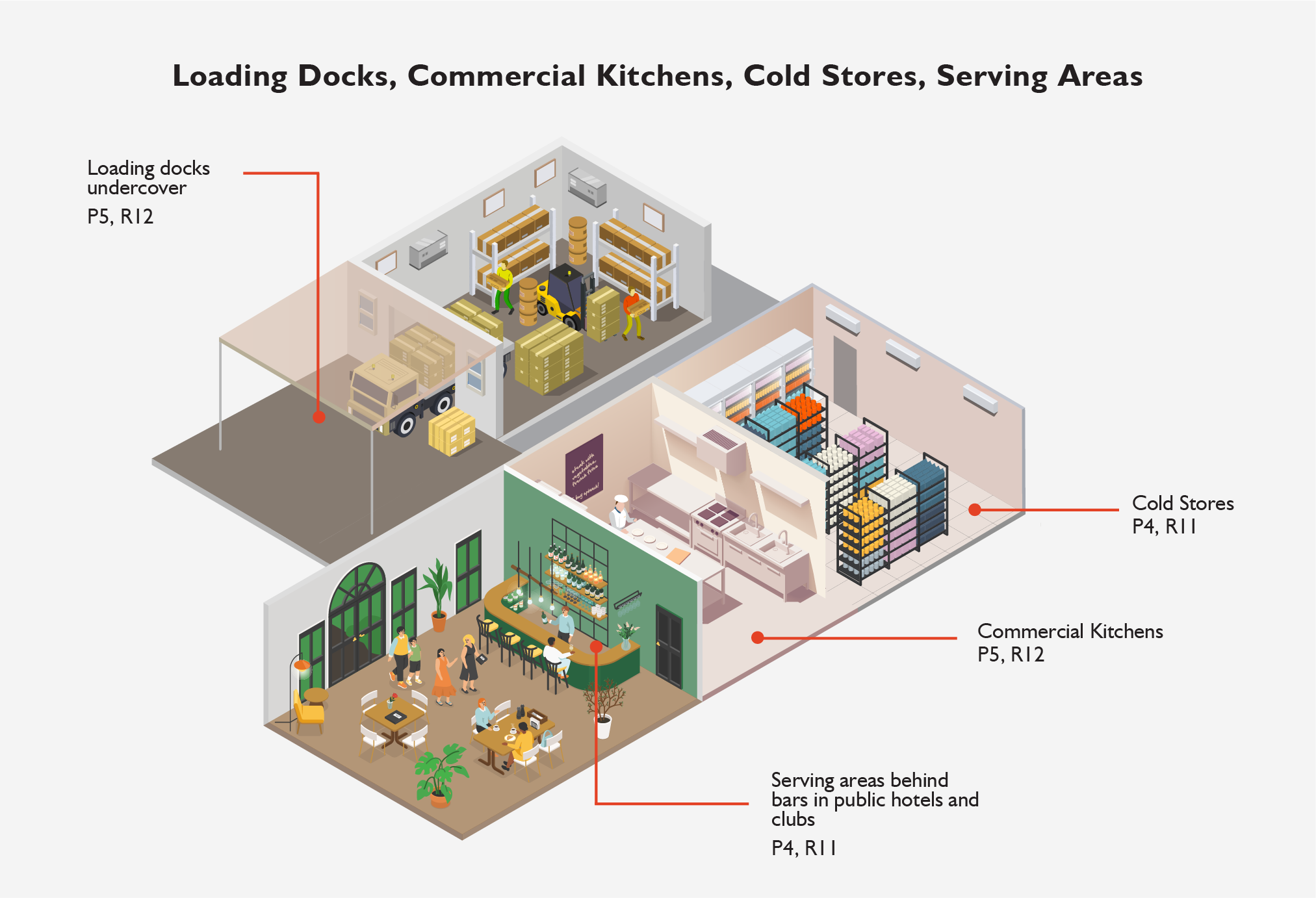

When it comes to projects around the home, it is also good practice to consider slip ratings for kitchen, bathroom or outdoor tiles to help safeguard against slips and falls in wet environments. But also keep in mind, choosing a higher slip rating may not be the best for the space. A higher slip rating isn’t always necessary — P4+ or R11+ tiles are oftentimes more textured, so dirt and soap can stick, meaning more cleaning.
Always refer to the tiling Australian standards when selecting tiles for wet or high-traffic areas to ensure proper safety levels.
Common Slip Rating Mistakes (and How to Avoid Them)
- Mistaking indoor vs outdoor needs: A tile that’s great for a living room floor may become very slippery when used outside. To avoid issues, check both the environment and the tile’s slip rating before installation.
- Assuming any matt tile is non-slip: Matt tiles can range from P1 to P4. The finish alone isn’t enough — always check the slip rating.
- Overspecifying for aesthetics: Highest-rated tiles aren’t always needed and can be harder to clean. Select the rating that suits the actual conditions.
- Spec mismatch between architect and installer: Tile substitutions are common, but any change must be approved and communicated. Installation instructions should always be followed to maintain the intended slip resistance.
How Johnson Tiles Simplifies Slip Rating Compliance
We are committed to safety and ensure all tiles are tested in accordance with the relevant tiling Australian Standards. Our product catalogue includes tiles suitable for every part of your project — from commercial kitchens to hotel lobbies and residential outdoor areas.
Johnson Tiles products are tested to the Australian standard AS4586, Slip resistance classification of new pedestrian surface materials, by NATA accredited laboratories.
Our product pages include:
- Slip rating information within the Product Specifications
- Technical Data Sheets for detailed performance data
Our Account Managers, located across Australia, are happy to help with project requirements, compliance information, and communicating slip resistance to your clients.
Explore our slip-rated tile ranges to select products with confidence.
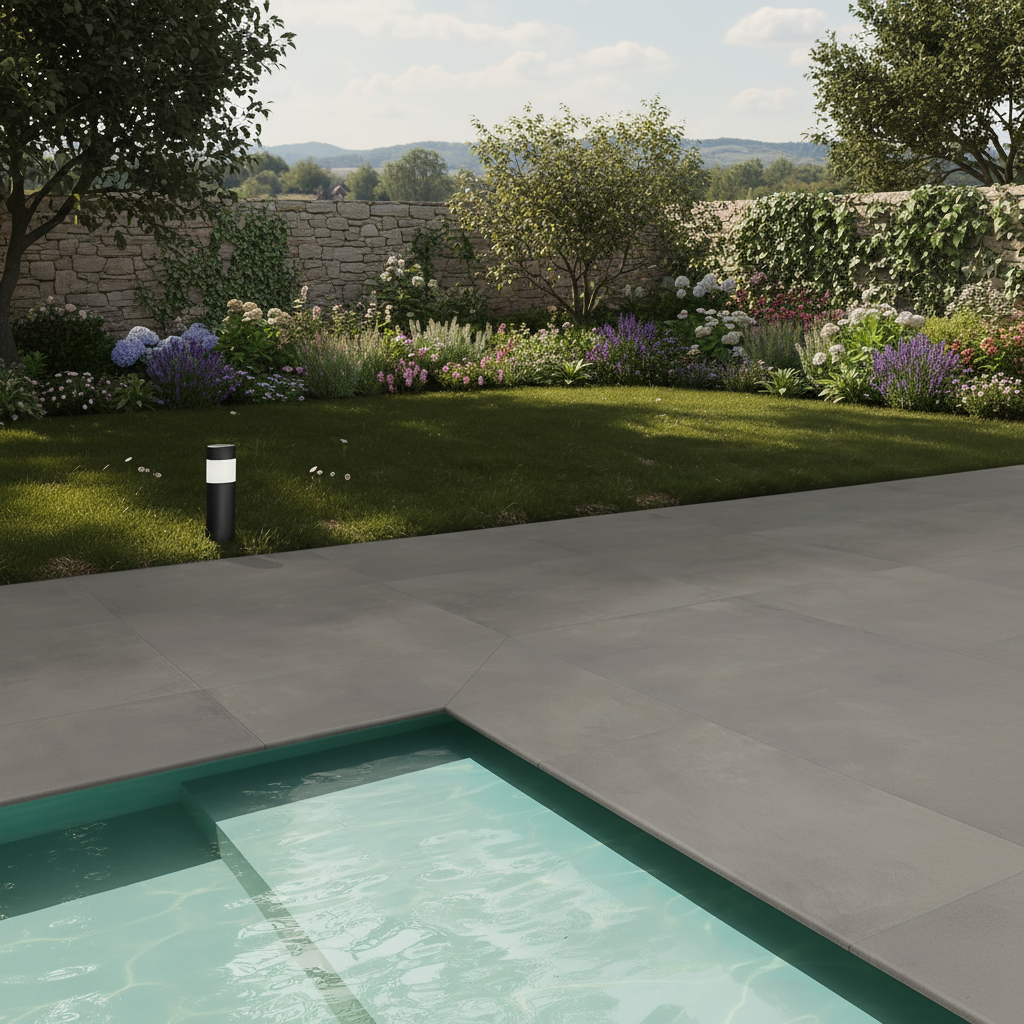
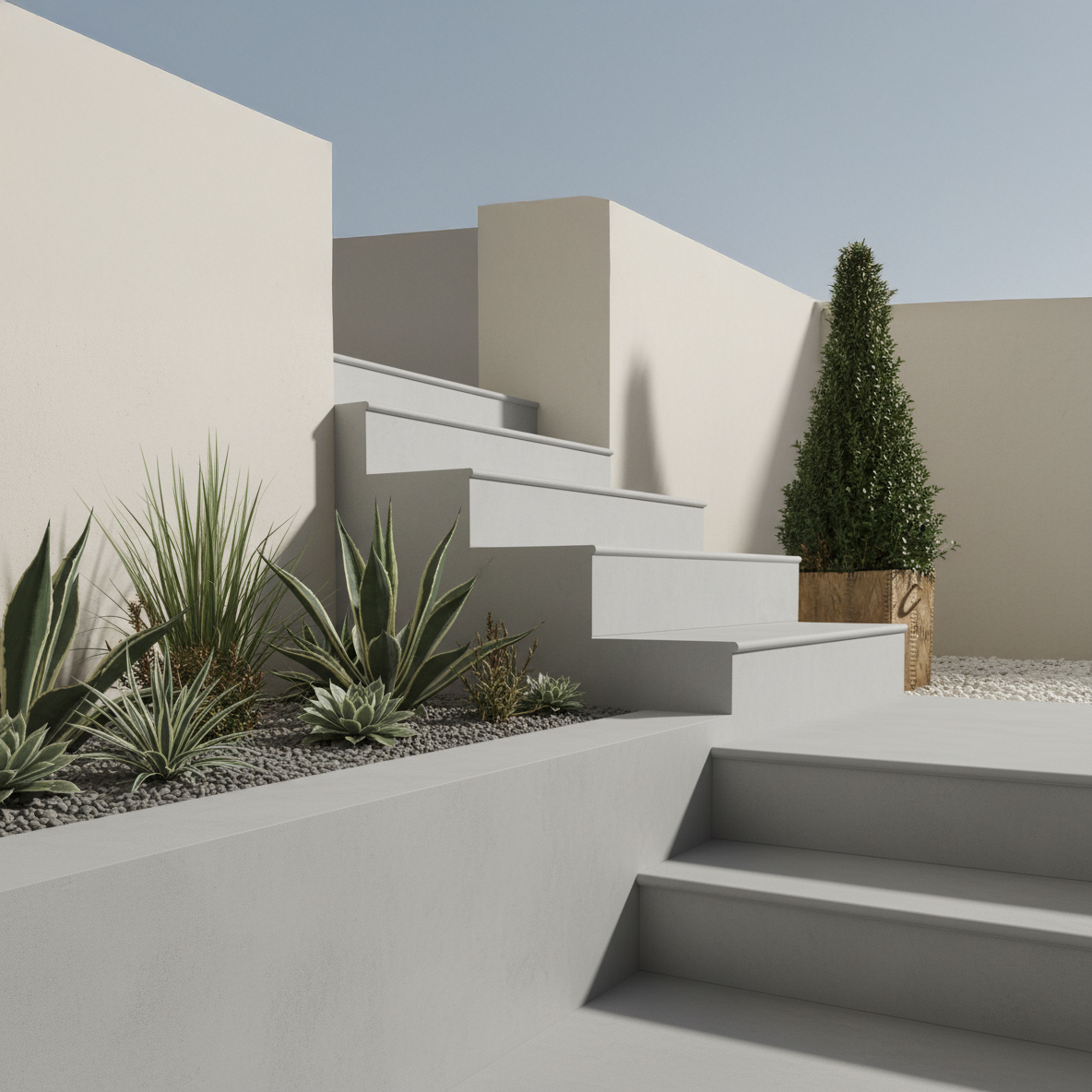
FAQs on Tile Slip Ratings for Retail & Commercial Use
What’s the difference between P and R ratings?
P ratings (P0–P5): Come from the Wet Pendulum Test, suitable for wet, level surfaces indoors and outdoors.
R ratings (R9–R13): Come from the Oil-Wet Ramp Test, designed for oily, industrial, or food-preparation environments.
Do all outdoor tiles need to be P5?
No. Slip rating requirements depend on exposure, drainage, slope, and use.
- High-risk areas (pool surrounds, external ramps) often require P4 or P5.
- Lower-risk areas (covered balconies, private alfresco spaces) may only require P3 or P4.
Can tiles lose their rating over time?
While the original lab rating does not change, performance can decline. Wear, cleaning residues, sealers, or build-ups can reduce friction. Proper cleaning and maintenance help preserve slip resistance, particularly in high-use commercial spaces. Existing floors may be re-tested using AS 4663.
Which test applies to existing floors?
For already installed surfaces, slip resistance must be assessed using AS 4663, which includes wet pendulum testing on site. Ramp testing applies only to new samples.
Do tiles with a Slip Resistance need special cleaning?
Yes — highly textured tiles (e.g., P5 or R11+) can trap dirt and soap scum more easily. Follow the manufacturer’s cleaning guide to keep them safe and looking good.
Choosing tiles is not just about style — it’s about balancing beauty, durability, and safety. Understanding slip ratings helps prevent accidents, ensures compliance, and supports confident decision-making for homes and commercial projects alike. If you need further support, our team is here to help with product selection, technical guidance, and specification advice.
Please note: The information provided is a general guide only. Always refer to the relevant Australian tiling standards for specific requirements.


